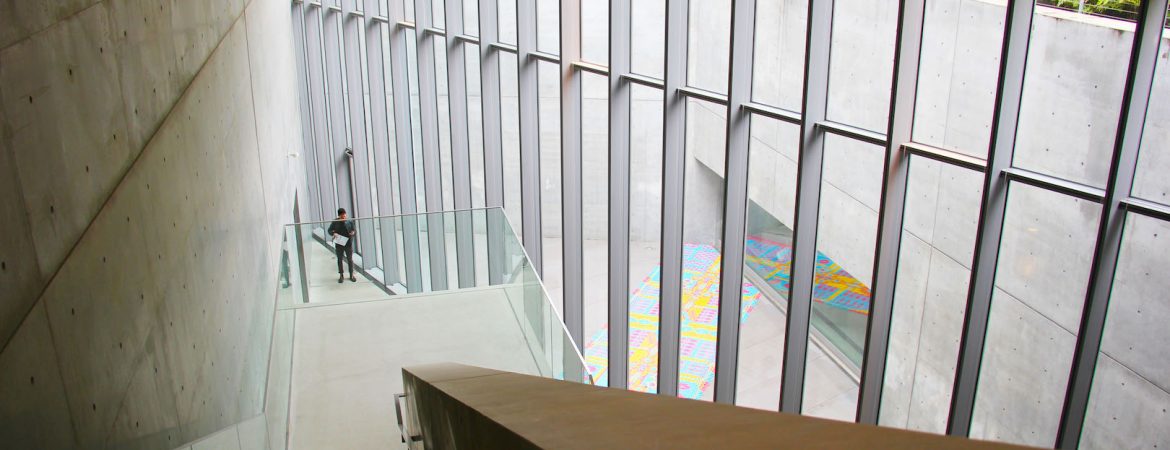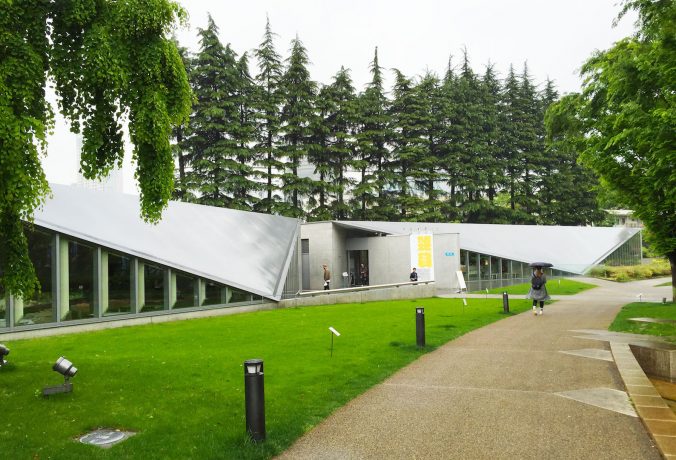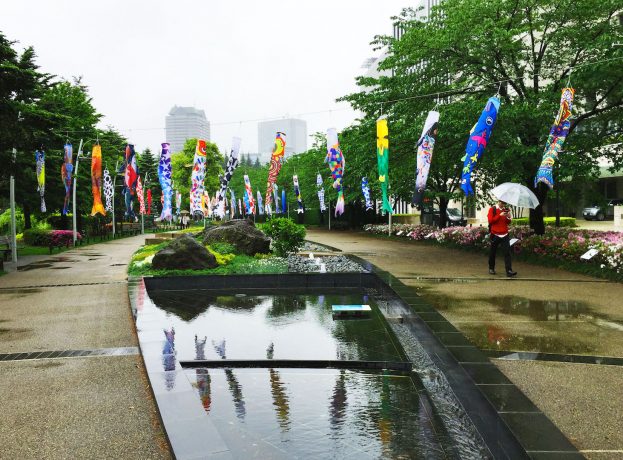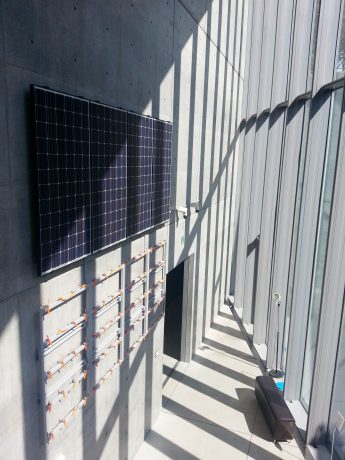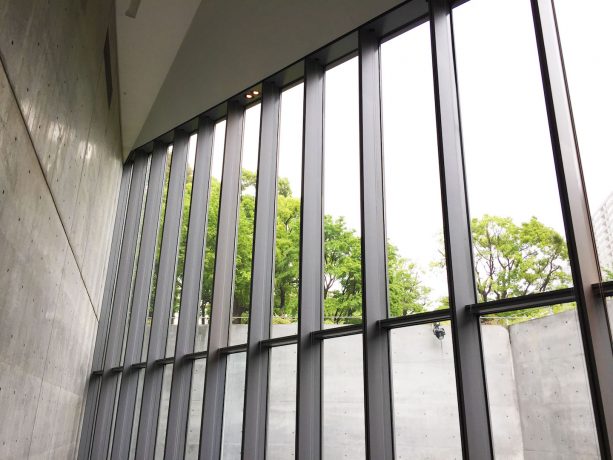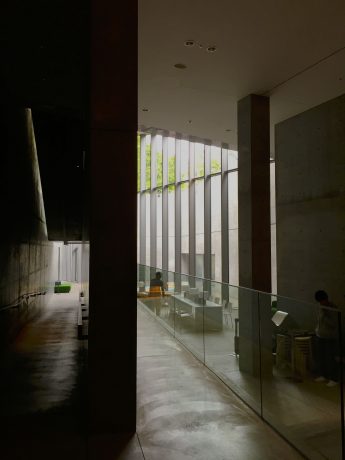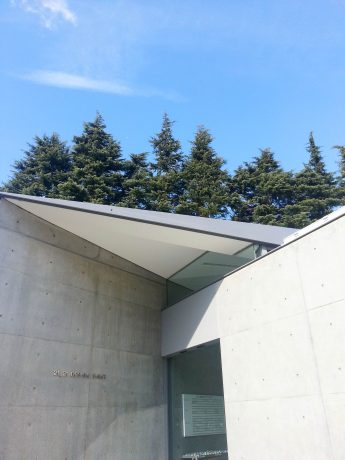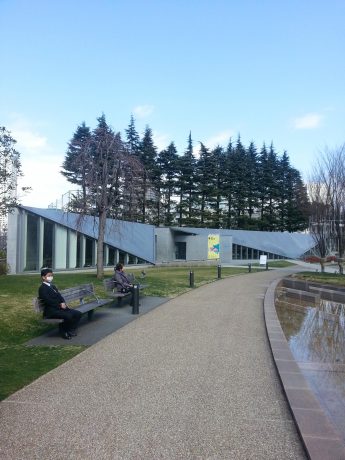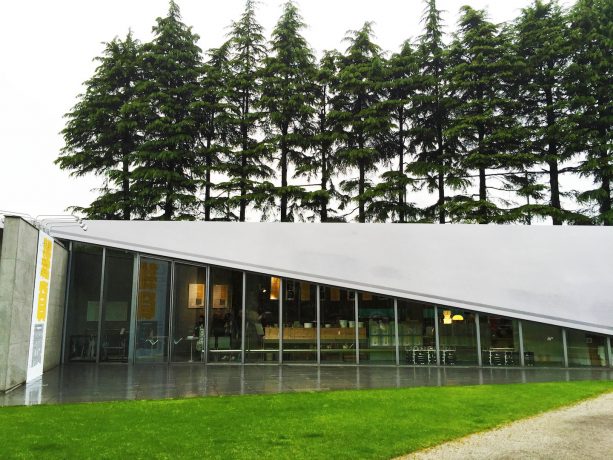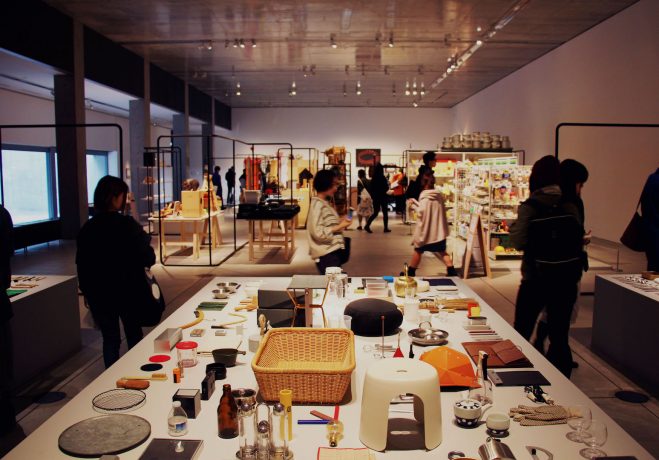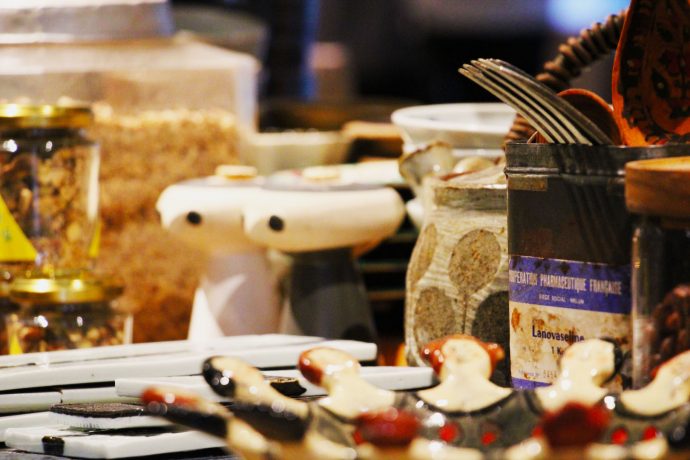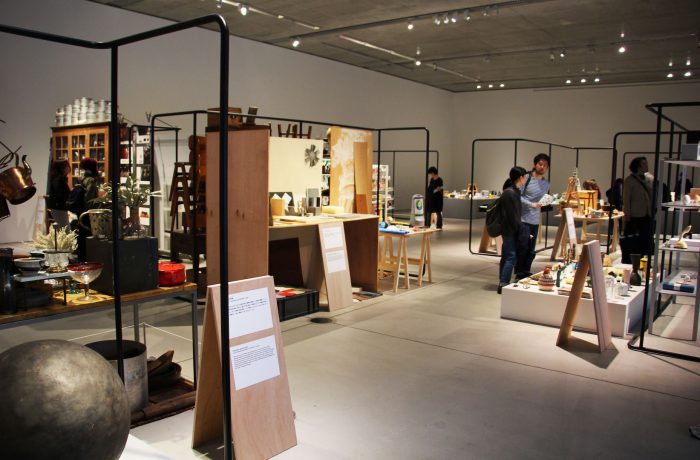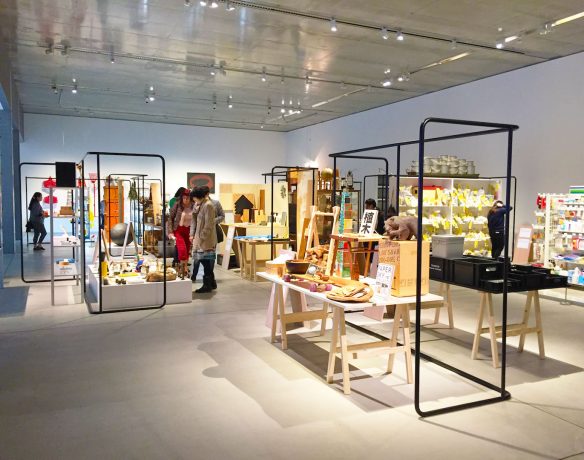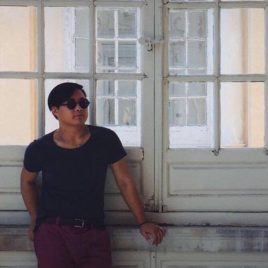To say the least, the 21_21 Design Sight is in itself a work of art. Meticulously thought out through and through from its architecture to its inherent meaning- it is a work of inspiration. Designer Issey Miyake, architect Tadao Ando and sculptor Isamu Noguchi always believed there was a need for a design museum in Japan, and in March 2007, the 21_21 Design Sight was opened. Hosting exhibitions primarily focused on everyday objects such as water, man, nature, chocolate and other household items, this museum aims to turn society’s eye towards a new perspective: on how we interact daily with seemingly ordinary objects.
Walking up to the museum through the the Garden of Tokyo Midtown, the museum is at first unapparent as most of the structure is not above ground. Acting as not to distract from the rest of its surrounding the 21_21 Design Sight blends seamlessly with the natural subjects that surround it. Arriving closer to the building, visitors can’t help but feel intrigued by the unique shape and angle of this building's walls and roof.
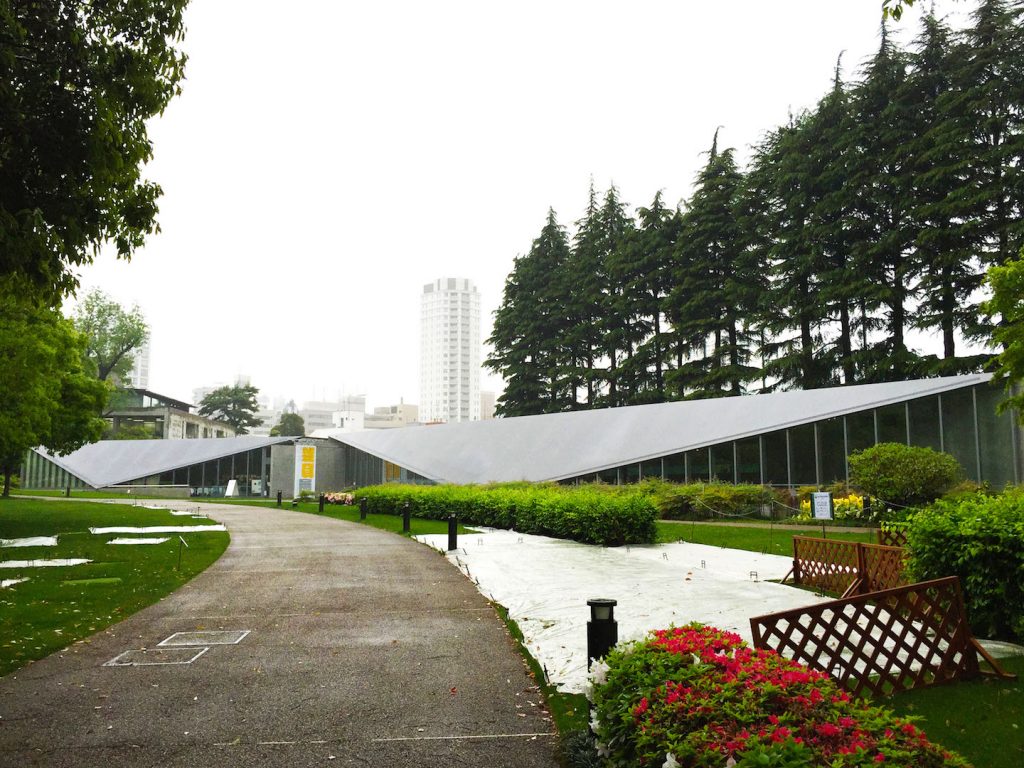
Designed by famed architect Tadao Ando, the structure takes inspiration from Issey Miyake’s eclectic style. His ever popular concepts of “a Piece of Cloth” is used to create the idea of a single piece of steel folded forming the roof. The windows that make up the walls happen to be the longest sheet of double-glazed glass in Japan. The building is quite literally, two triangular plates of steel-reinforced with concrete and glass that rise up from the ground.
As a visitor and a designer myself, I think I can only metaphorically describe this space as the reminiscent feeling of setting your eyes on Monet’s famous “Water Lilies”. There is a mixture of awe and discovery in an absolute tranquil space. There is a rare warm close-knit feeling in such a modern building. Often modern spaces can come across as sterile and uninviting, but the 21_21 Design Sight evokes a delicate balance of modern simplistic design with the comfort of home.
True to his own style, Ando expresses a sense of lightness and simplicity in his buildings and this is no exception. This is no more apparent than when visitors walk through the entrance past the small gift shop and peer down the stairs into the vast space of the underground level, revealing high walls of exposed concrete (very characteristic of Ando’s designs) and windows that allow natural light to just touch upon the open space. A large part of the building is in fact underground, and the large windows provide a lightwell to illuminate the angular space. The exhibition spaces are ambitious and open with trapezoidal shaped rooms that feel modern and intimate at the same time.
The exhibition spaces are put together to form a triangular sunken courtyard that can also be used as a exhibition space. Going from room to room there is a general flow of direction from how the space is arranged by the stairs to the mezzanine floors that highlight the current exhibitions. The two main exhibition rooms lead to other smaller spaces and halls secluded from the large windows of the lightwell. However, the museum continues to make full use of these areas by using them as other gallery spaces or to show short films.
The museum's name is derived from the English phrase for perfect sight “20/20 Vision”, a phrase that describes spectacular vision. The name describes the essential need for having both a sharp eye and perceptive insight for good design. The added ‘one’ in 21_21 also implies looking beyond the now and a meticulous view of details and insight of design processes. The space aims to encourage exhibitions and audiences to view the world around them with a different perspective, approaching items and themes used in everyday life and uniquely designed objects. In more ways than one, the 21_21 Design Sight should be seen as less of a museum and more of a space of conversation. It provides a space for visitors to think about design, share opinions and ideas with like- minded peers.
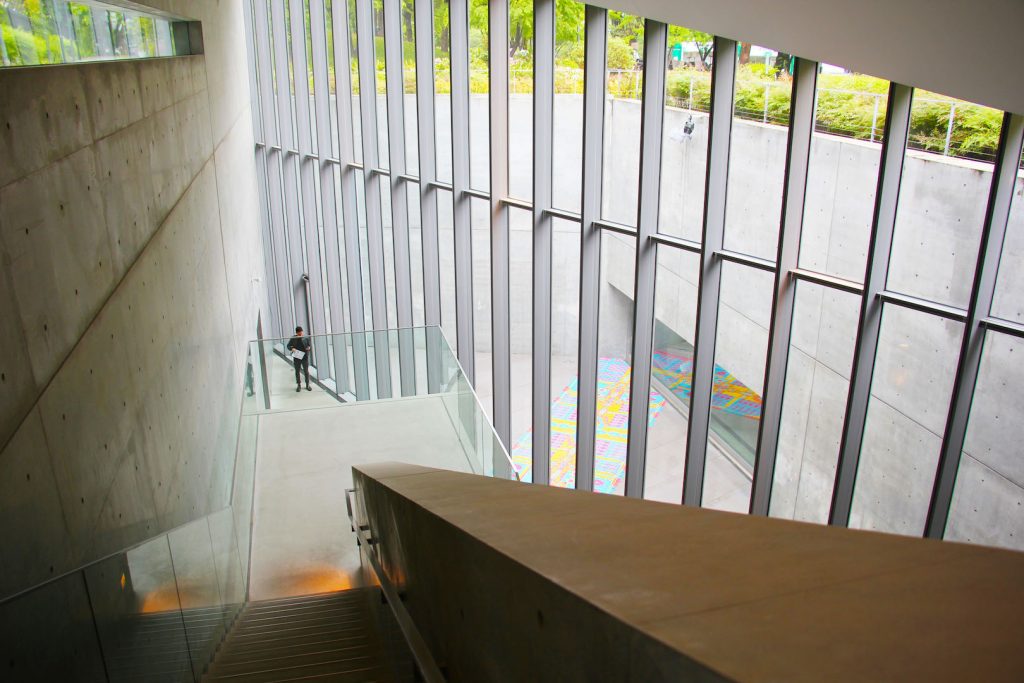
Despite Japan’s long dedication to design culture, the 21_21 Design Sight is actually Japan’s first museum of design, hosting events and workshops that test the preconceived expectations and identities of everyday objects. Directed by three big names in the design world, Issey Miyake (founder and renowned fashion designer), Taku Satoh (graphic designer), and Naoto Fukasawa (product designer), continually review programs with Associate Director Noriko Kawakami to challenge stigmas and provide insight to viewers through different subject matter.
From the walk through the park leading up to the Design Sight and inside the space, the entire experience is dynamic. Though a quiet and thoughtful space, it is easy to tell that every visitor is filled with respect and interest in the exhibition showcased. The contrast and match between the modern building with the organized exhibition provides a inspiring space for thoughtful insight and conversation. The weaving of steel and glass converge to create a lightwell for natural light to pierce the inner sanctums of the building creating a somewhat romantic feel as a sense of perfection is achieved through these structures and walls.
There is no permanent exhibition at the Design Sight, but several exhibits are brought in throughout the year. The original founders Miyake, Ando and Noguchi all agreed that there is a need for a place where Japanese design could be discovered, promoted and shared, leading to the conception of the museum itself. Miyake has mentioned before that he wishes for the museum to be a space that reaches across boundaries and brings together craftsmen from all genres, conceiving new plans through the creative process. The space not only allows visitors and designers to look towards the future of design, but also aims to bring together all the collective pasts of design that Japan has developed, serving as a base for new discoveries and insights. Since its conception, the 21_21 Design Sight has grown to encompass not just Japanese culture and design but also positions itself as a place for reviewing objects and ideas from around the world.
The 21_21 DESIGNSIGHT is located in Tokyo Midtown's Midtown Garden. It is a quick walk from Roppongi station, I strongly recommend you to stop by and get enlightened by Japan's design culture.
